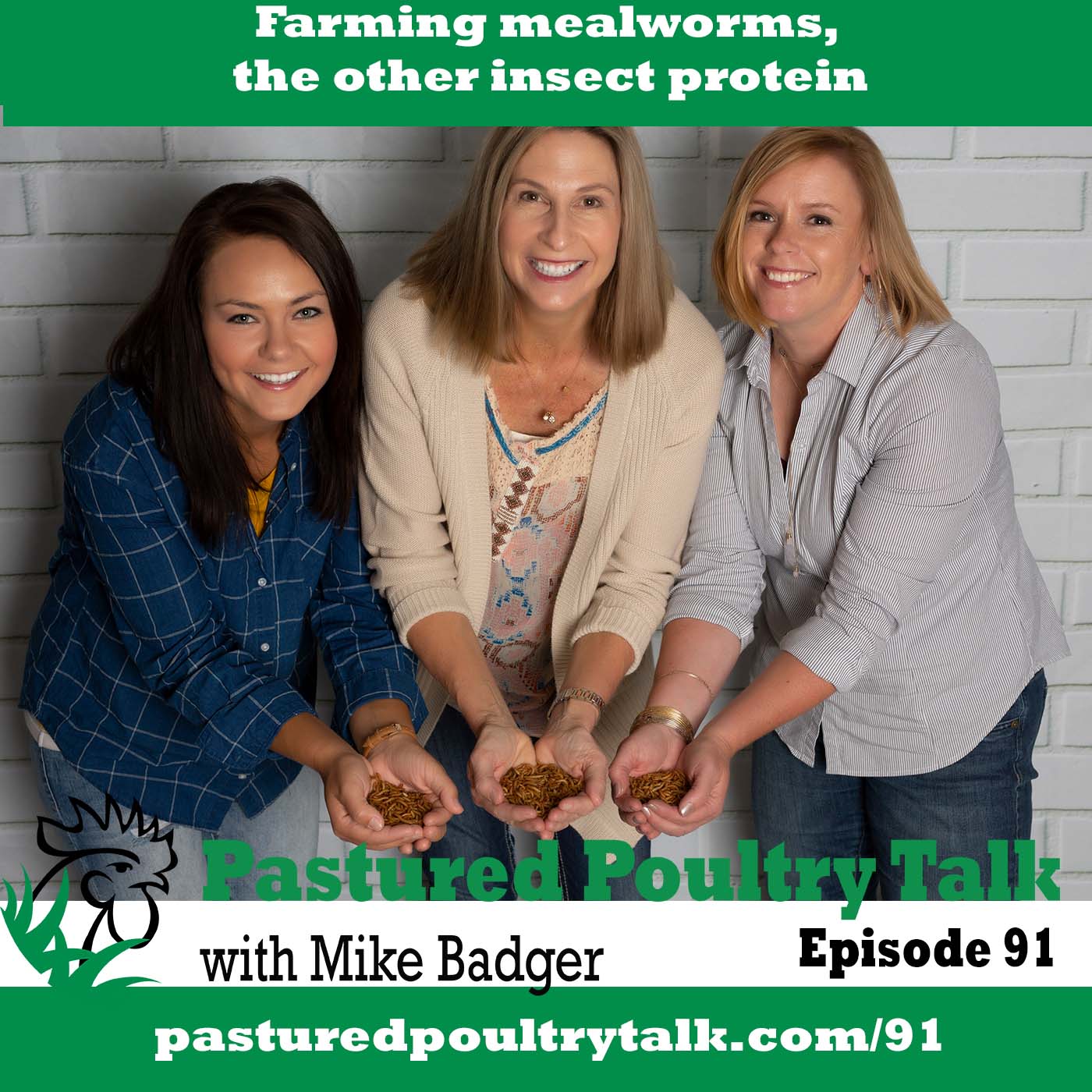
[podcast src=”https://html5-player.libsyn.com/embed/episode/id/10888083/height/90/theme/custom/thumbnail/yes/direction/forward/render-playlist/no/custom-color/88AA3C/” height=”90″ width=”100%” placement=”top” theme=”custom”] Crickets are a popular insect protein for humans, and black soldier fly larvae receive most of the attention among chicken keepers; Cheryl Powers, Jord Producers, plans to change that by farming mealworms as a supplemental chicken feed. Actually, she’s working to position mealworms for reptiles, exotic birds, and humans (but we tend to stick to chickens).
Crickets are a popular insect protein for humans, and black soldier fly larvae receive most of the attention among chicken keepers; Cheryl Powers, Jord Producers, plans to change that by farming mealworms as a supplemental chicken feed. Actually, she’s working to position mealworms for reptiles, exotic birds, and humans (but we tend to stick to chickens).
One of the biggest benefits of mealworms is that they are high in protein. There has also been published research in Poultry Science that shows feeding mealworms to chickens can increase average daily gain, feed conversation, egg size, and flavor.
According to Cheryl, you only need to feed a small amount of mealworms to see an increase in the protein intake of the chickens’ diet. Less than 10 mealworms is her recommendation. Chickens love the mealworms, and they will forage on them without hesitation.
There can be too much of a good thing. If the birds fill up on the fiber of the mealworms, they won’t get all the other vitamins, mineral, and nutrients they need to thrive. Mealworms, in other words, are not a complete diet.
Nutrition of Mealworm as Chicken Feed
According to analysis by Jord Producers, the mealworm contains the following nutrition profile:
- Protein
- As-fed: 19%
- Dry Matter: 55%
- Fiber
- As-fed: 3%
- Dry Matter: 8%
- Fat
- As-fed: 9%
- Dry Matter: 26%
As-fed calculations represent the live mealworm, as eaten by the chicken. The dry matter removes the water from mealworm, thereby concentrating the nutrition.
Growing Mealworms for Chicken Feed
As Cheryl describes in the podcast episode, the mealworms are raised on a wheat bran with sliced potatoes or carrots as a water source. Mealworms are farmed indoors in an environmentally controlled space.
The tubs containing the mealworms are stacked vertically, making this a versatile farming operation. One of the company’s growers, has actually repurposed an unused hog farrowing barn for the mealworm farm.
Jord Produces is in the first year of business and building markets as they learn to be insect farmers. They have a first goal of being able to produce 400 pounds of mealworms a week.
For now, the poultry focus will be on supplemental feeds and treats for chickens. Cracking the commodity pricing floor to compete with soy is a difficult task. The other interesting challenge is that it takes mealworms approximately two-and-a half months to reach harvest. When you put that in perspective, a cornish cross chicken can be ready to harvest in under two months (7 or 8 weeks).
But as more and more consumers move toward soy-free fed poultry products, insect proteins may make inroads as a poultry feed ingredient, pending certification from the Association of American Feed Control Officials (AAFCO).
Contact Cheryl Powers
Jord Producers: website | Instagram | Facebook | Email

1 comment on “Farming mealworms for chicken feed with Cheryl Powers: PPT091”